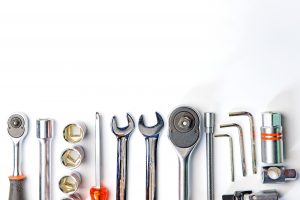 Good morning class, today we’ll be discussing some of the intricacies with furnace safety and how you can have your own furnace safety checklist!
Good morning class, today we’ll be discussing some of the intricacies with furnace safety and how you can have your own furnace safety checklist!
While furnaces are built for safety, and year after year a new technological breakthrough leads to better furnace safety and performance, they’re still combustion machines. At the end of the day, your heating system is still burning fuel to create heat, and this can be dangerous when neglected or poorly maintained.
If you’re constantly feeling nervous or awake late at night worrying over the state of your furnace, then this post is for you. While we might be ready to perform Cherry Hill furnace repairs, we need homeowners to be vigilant and contact us when their systems aren’t working correctly. Stay sharp and utilize this safety checklist to ensure your heater is in good condition.
Gas Furnace Safety Checklist
If you’ve got a gas furnace and you’re worried about the condition of the system, then take a look at our step by step checklist below. If any of the following things seem out of place or abnormal, call a professional as soon as possible.
- Approach with Caution. Don’t approach your gas furnace like a toy. These systems are delicate and require the utmost care and attention. If there’s an issue that you think is coming from within your furnace, like a problem with the heat exchanger or exhaust, then we implore you to contact a professional technician. Otherwise, practice caution when near your system.
- Look at Your Burner. If you can see the flames in your gas burner, there can be some clues if you’re having issues. A healthy gas furnace that’s well-maintained will always burn with a steady blue flame. If your furnace’s flame is yellow or orange, or if it is flickering, you’ve got a leak in your system with either oxygen or carbon monoxide. Call a professional if your flame isn’t steady and blue.
- Listen to Your System. No, your furnace isn’t going to talk to you—but it will make noises when there are problems sometimes. If you’re hearing anything other than the gentle sound of moving air, like grinding, screeching, or rumbling, then you’ve got a major problem in your furnace that needs to be addressed.
- Follow Your Nose. Gas leaks can be a terrifying problem that occurs with aging gas furnaces. While carbon monoxide can’t be smelled because it is odorless, flammable gas can be smelled. If you’re detecting the scent of rotten eggs anywhere in your home, this could be a sign that your furnace is leaking flammable gas which is a huge safety concern.
- Set Up Alert Systems. Remember when we mentioned carbon monoxide? Sure, it can’t be smelled or seen, but dispersing carbon monoxide detectors throughout your home could be an easy and affordable way to defend your house against a CO leak.
Well, there you have it. Here is a simple guide that any homeowner can follow to feel more comfortable that your furnace is working correctly. Notice anything suspicious? Call our team (or in the case of smelling gas, the fire department) today and we’ll take care of you.
Contact the professional team at Ambient Comfort to deal with your furnace issues.
